Adrian Lauterstein’s review of the Fuji Instax Square SQ6, analog instant camera.
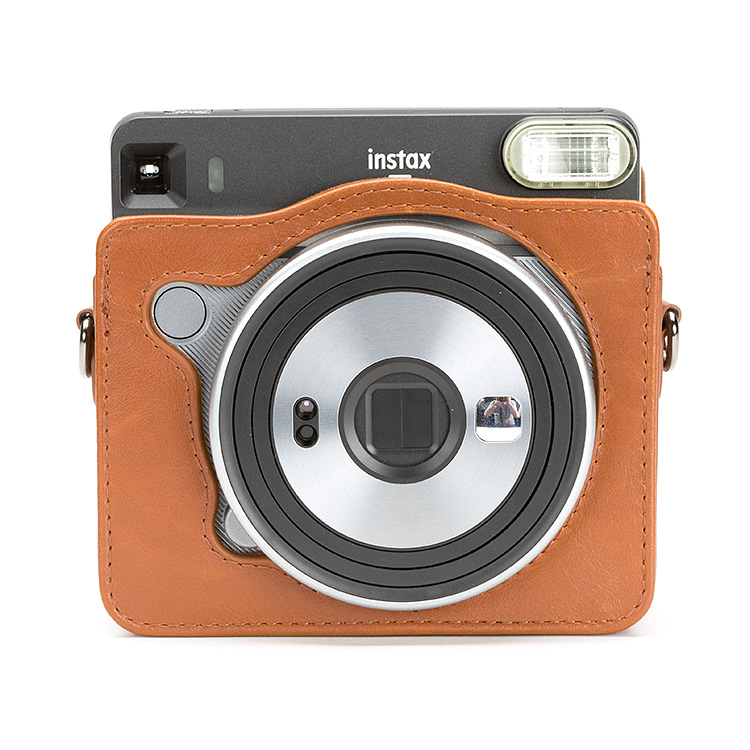
A form fitting leather case can protect instant cameras from damage and prevent accidental film door openings.
Fuji Instax film is nothing new.
It has been around since 1998. Instax represents efforts by Fuji to improve upon Polaroid’s famous instant films. Instax eliminates the mirror that the traditional Polaroid cameras use to reverse the image, because it gets exposed through the back of the film. While this does allow for less boxy cameras, the fact that the emulsion is exposed from behind through a fairly thick piece of film, which likely softens the image. Imagine if you loaded a 35 mm film cartridge backwards in a camera. All the Fuji Instax cameras sold today have plastic lenses. That also does nothing for sharpness. There are a variety of images here in the test gallery on this page for you to judge for yourself.
Likewise, Instax has an 800 ASA vs. 640 ASA for Polaroid I Type or 600 films. Higher ASA usually makes for more grain and a softer image. If one has an old Polaroid SX-70 or a rebuilt one from Mint of Hong Kong, you can shoot with Polaroid 160 ASA film. Digital Photography Review, a long established review site prefers Instax over Polaroid, but this is very subjective territory. All Instax formats now have a corresponding monochrome film available.
The original Instax Mini had an image area of 1.8 x2.4 inches. A year later the company released a wide version at 3.9 x 2.4 inches. Unlike older Polaroid film packs, Instax cameras use batteries separate from the film pack to power the film ejection and controls, lowering the cost per pack.
Square Instax film is a more recent arrival.
Occupying the middle ground between Fuji Instax Mini and Instax Wide instant film formats is the Instax Square, released in 2017. Its proportions may bring to mind the old 2.25 inch medium format negative film standard, although the image area is a larger 2.4 x 2.4 inches. Fuji currently makes an SQ20 camera, replacing the SQ10, that like the Mini LiPlay is a digital camera with a built in printer, that allows you to choose which shots to print and a USB port to transfer digital images to a computer or other digital devices.
The SQ6 is not that. It is a basic analog instant camera with no digital anything. The Taylor Swift edition of this camera has been a big seller for Fuji. In 2017 Polaroid filed a legal complaint regarding the Fuji square film format borders, where the chemicals were stored, being too similar to Polaroid. Why earlier versions of Fuji films were not a trigger for this is not clear to me. At this time, four years later, Square is still here and there is no further mention of the legal battle.
The SQ6 is center of the road in instax cameras.
The 300 Wide has a bulkier body and for many people, Mini is too small an image size. The SQ6 has a two element 65.75 mm retractable plastic lens listed as f/12.6 maximum and a shutter speed range from 1.6 seconds to 1/400 of a second. It is an automated affair that allows you to choose from different modes for different situations. In this, it does not have as many modes as the S90 Neo Classic Mini camera, but more control than the 300 wide. It has A (which is automatic), selfie mode (for which one uses the selfie mirror), Macro mode, Landscape mode, Double Exposure, Darken and Lighten. Unfortunately, Darken and Lighten cannot be combined with the other modes. That may be one of the biggest issues with this camera.
To get the sharpest images, work within the three focal zones. Macro (or selfie) is 1 ft to 1.6 ft. Automatic is 1.6 ft. to 6.6 ft. Landscape is 6.6 ft. to infinity
The other problems are that when in Macro mode it is hard to get a crisp image and the viewfinder does not adjust for parallex shift in the way that the Fuji S90 Mini does. Instead one is instructed to move the center dot to the upper right of the subject. With this sort of set up, close ups are always a challenge. No matter the mode it is easy to overcompensate or undercompensate for the position of the viewfinder, especially if one wears glasses. The center dot is not that visible.
On a brighter note, you can turn off the flash on this model, unlike the 300 Wide. The camera also has a 10 second self-timer that could also be used on a tripod to shoot a landscape and avoid any vibration from pressing the shutter button. You get to see some of my early mistakes from the first packs of film that I shot with this. I have been using SLR cameras for years. So, that is what I am used to. However, the first camera that I had in fifth grade was a rangefinder. It had the viewer on the left of the lens. This camera has it on the right, which as I usually shoot with my left eye, allows me to see more from the right.
Other players in this format include the Lomo’instant Square Glass It is a fold out bellows camera that looks cool, and takes both mini and square films. However, the shots that I have seen from it are not much sharper than those from the Instax. The Mint SF-70 which is another fold out bellows camera, is available for pre-order at this moment and it is in a completely different league, with a much more advanced lens, manual focus, and control over aperture and speed. However, it is very pricey and they make one that takes wide film. So, one would have to love the square format a lot to give up that real estate.
My overall conclusion is that this is a decent entry level camera for those who want to play around with Instax film in a pure analog device. If one works within the three focal zones of Automatic, Landscape, and the two close up settings you can get a reasonably crisp image for this type of camera. It is not so big that you can’t bring it out and form fitting cases are available for it. Just be aware that many tripod heads have screws that are not long enough to work with a case on, despite the hole they leave for it. Unlike some other cameras such as the Fuji S90 and Lomo Automat Glass Mini the tripod mount on the camera is at the bottom and not the side, although it winds up far off to the right. It uses CR2 batteries, which are not always easy to find, but they should last through a number of packs of film, depending on flash usage.
I scanned these shots on an older Epson all-in-one CX7450 and did a slight sharpening and very little if any brightness and contrast changes.
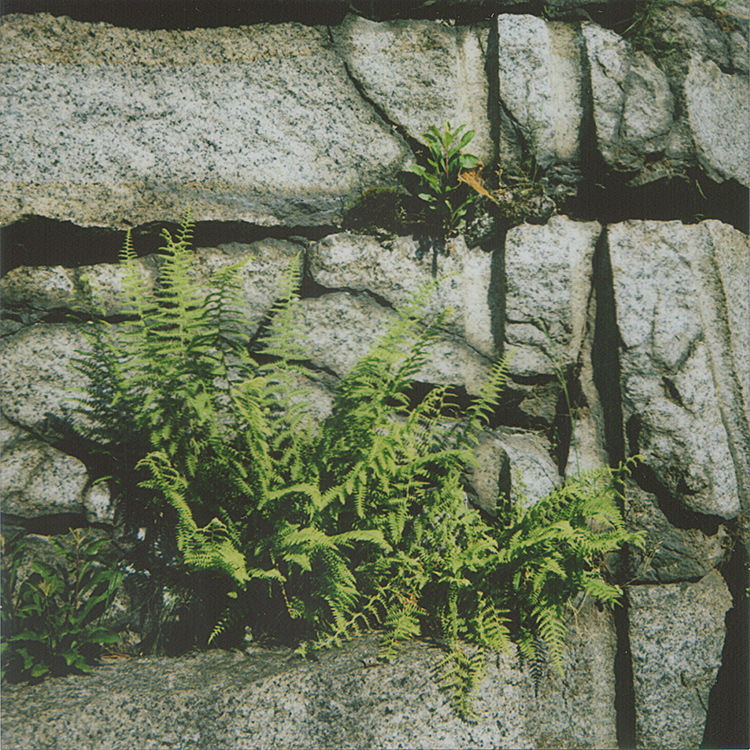
These ferns that were growing out of the granite cliff face, got shot with SQ-6 hand held in Darken mode, which in terms of focus means automatic. The image is far crisper than most shots that I have done in Macro mode.
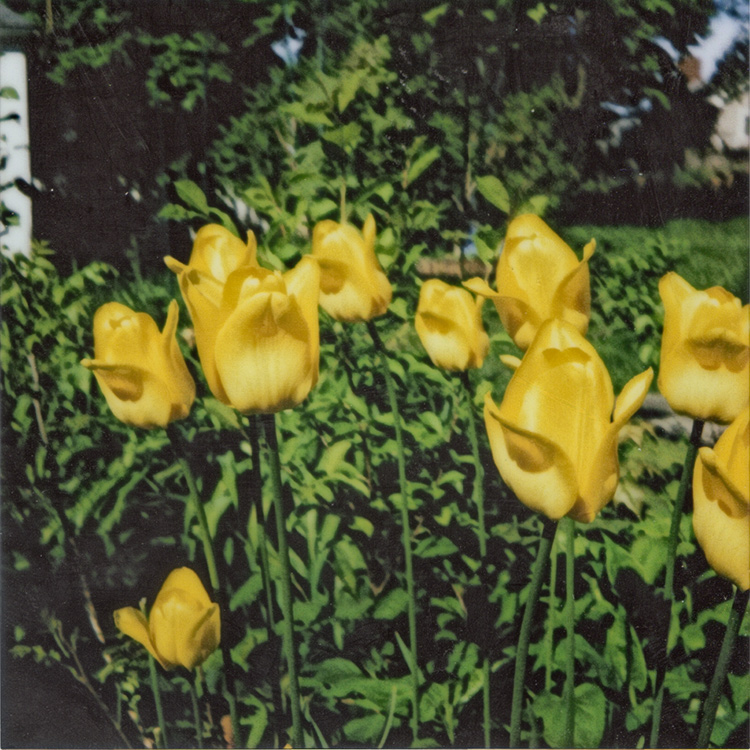
These tulips were shot in Macro mode. The image has nice color, but were too soft despite being in range. As this was a hand held shot, it is likely that operator movement was factor.
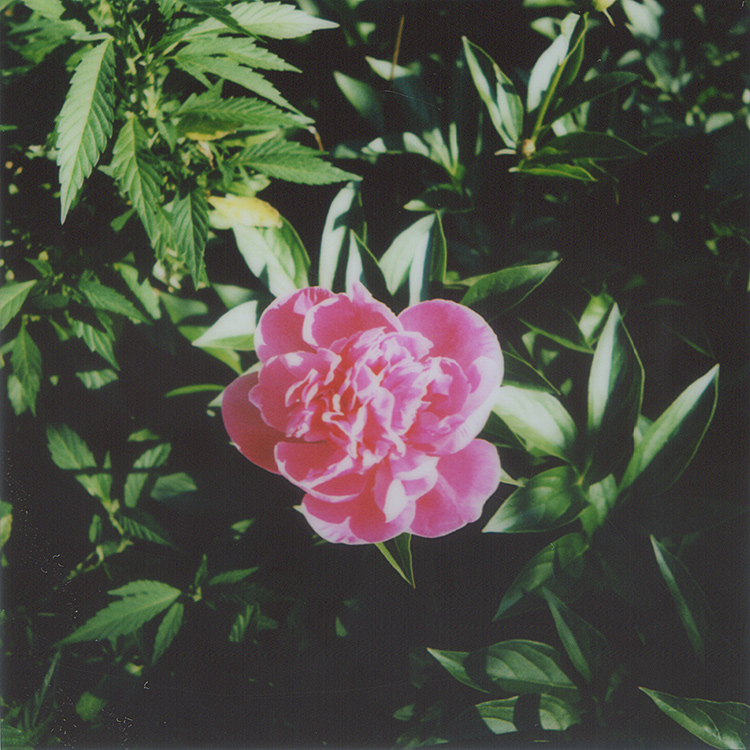
This Peonie is a close up shot went well. I am not sure what mode I was in, or if I used a tripod for this, but it does prove that something that I tried worked. Notice the over exposure of the highlights, typical of 800 ASA.
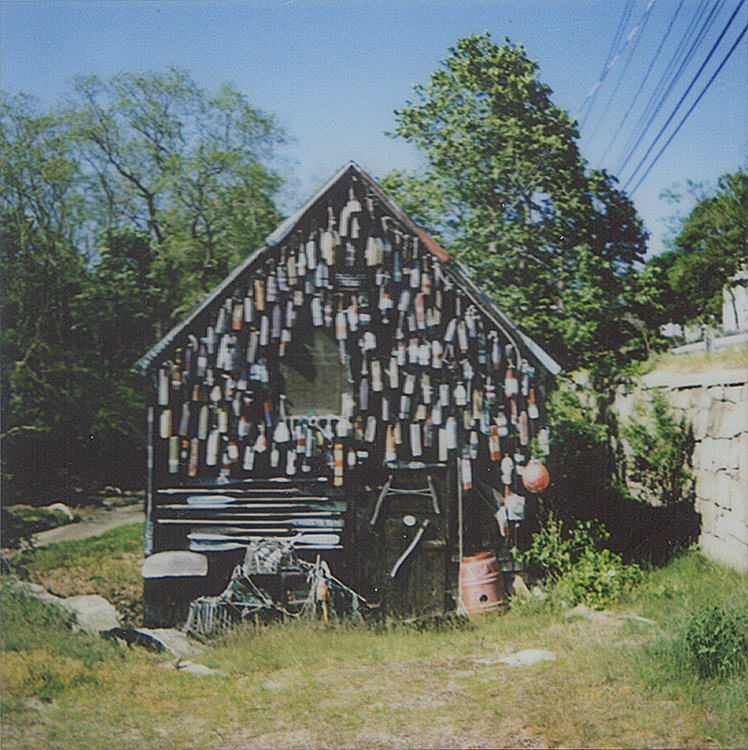
The classic fish shack in Gloucester, MA came out fairly well when I used a tripod, adjusted for the uneven ground and set the camera to Darken mode on this bright day. Landscape mode would have been sharper.
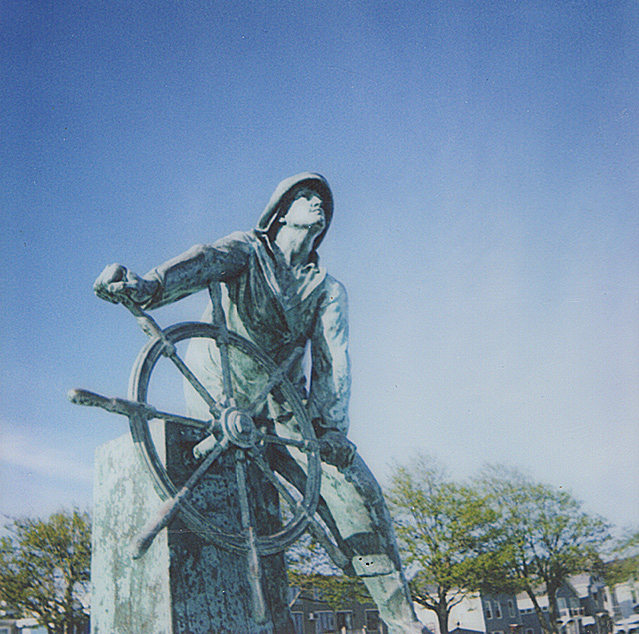
Here, I overcompensated too far to the right, although I was fairly close to this famous subject, the Gloucester fisherman’s statue.
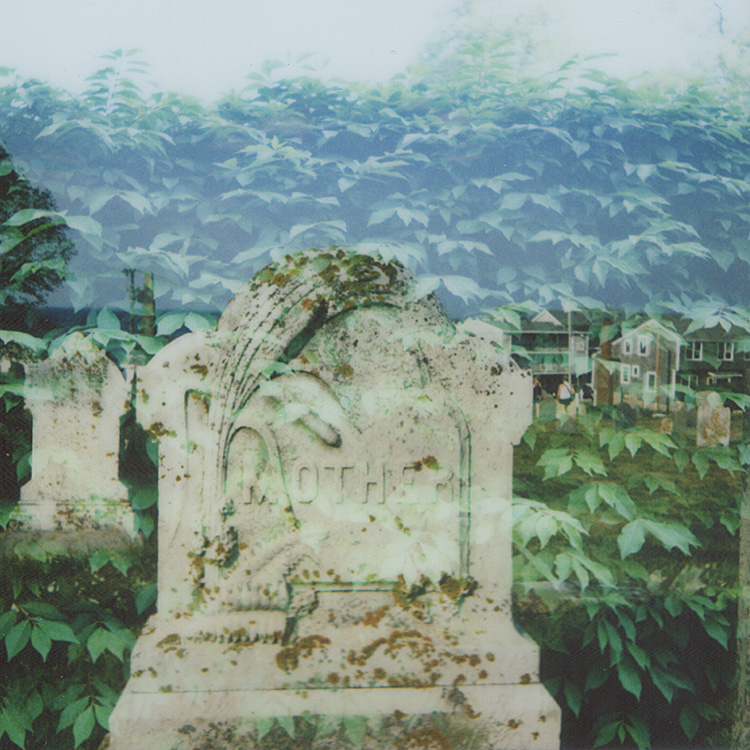
A double exposure of a grave stone and leaves in which the sky area shows how much the camera lightens the separate exposures.
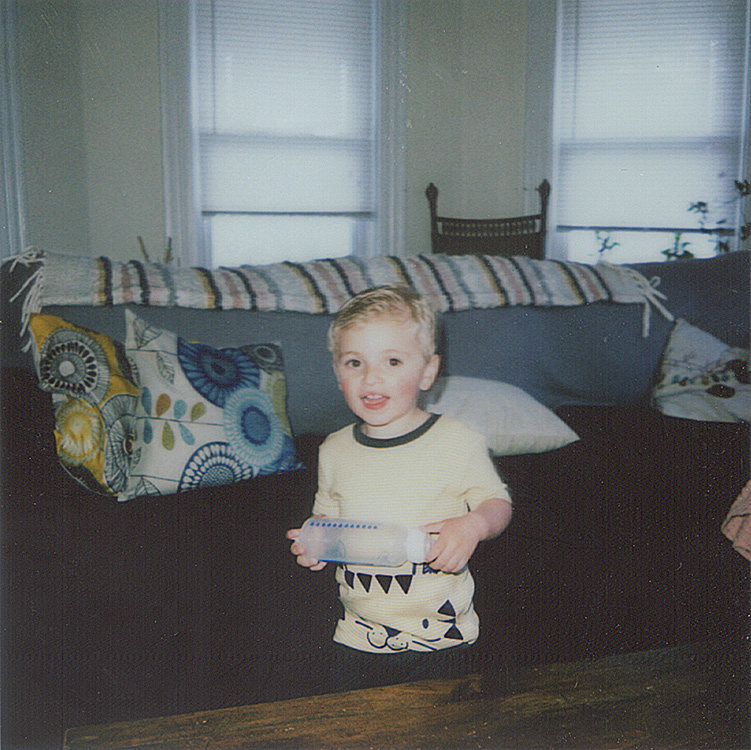
This indoor shot used automatic and flash. The subject is nicely centered. This really has some of the familiar Polaroid color going on, despite being Fuji Instax film.
These monochrome images should give you an idea of how the camera does with this film, which costs more than the color version.
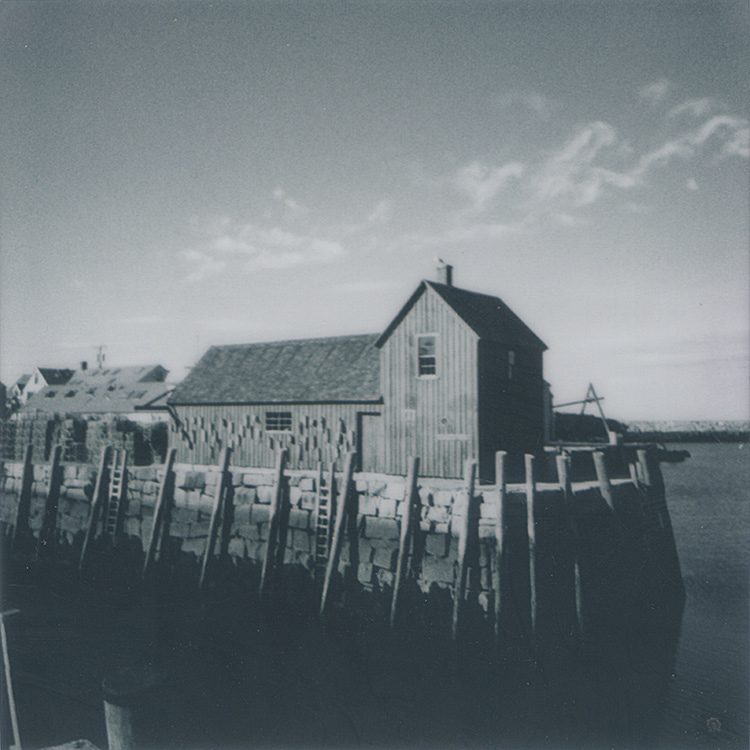
Motif #1 looks OK in this shot, but I used Darken mode and the water in front drops off to black. Landscape would have been a better choice. Either way, I like how the sky, building and stone pier came out.
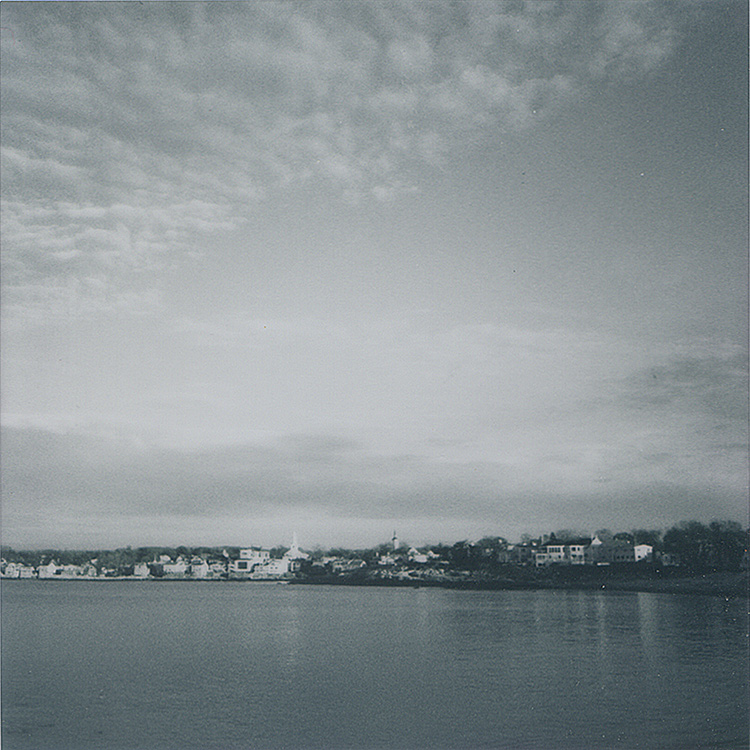
This shot of Rockport from Back Beach in landscape mode has some nice tones in it, but unlike the motif, it was a hand-held shot. A tripod might have added a little more clarity.
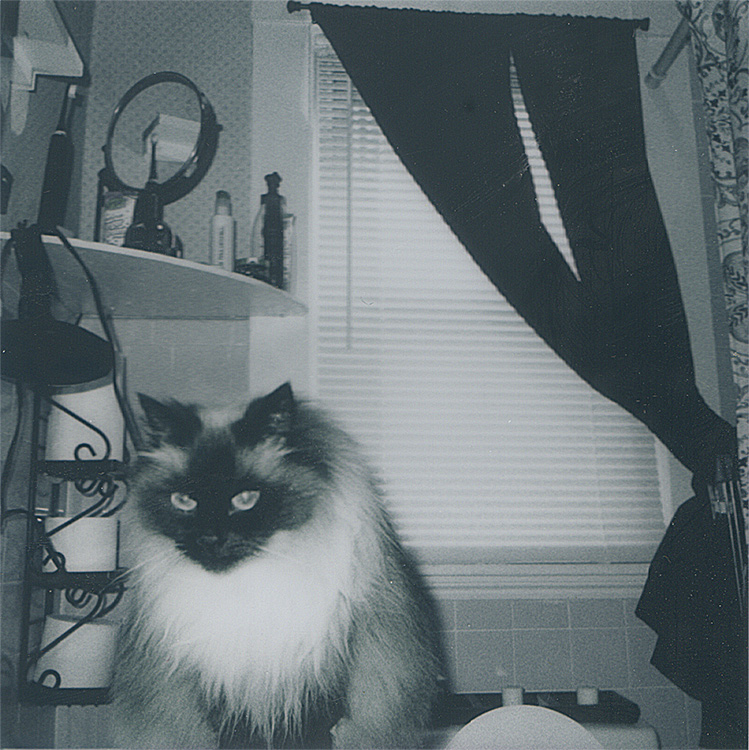
Although close to the subject, I must have gone too far to the right with the camera, again. Luckily the black blinds balance the shot. It is easy to over or under compensate with a ragefinder camera,and parallex gets worse at close range.
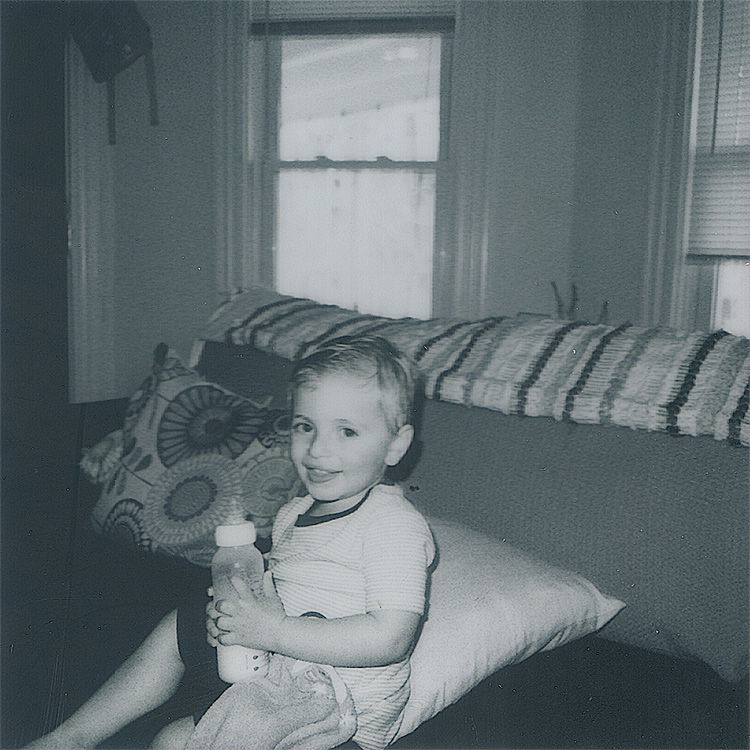
Shot with flash with very little ambient light from inside or out, on automatic, this image is fairly well centered and tonality is good. With the furniture and the room, it looks like it could have been yesterday or 40 years ago.
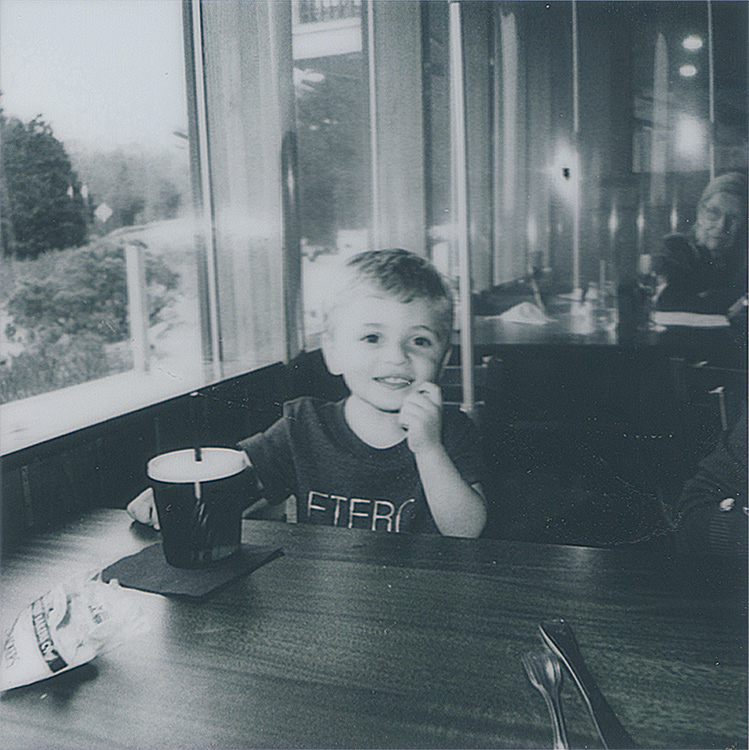
I think that is a flash flare in the glass behind the subject. The left side of his face is a little washed out because of strong outdoor lighting through the window.